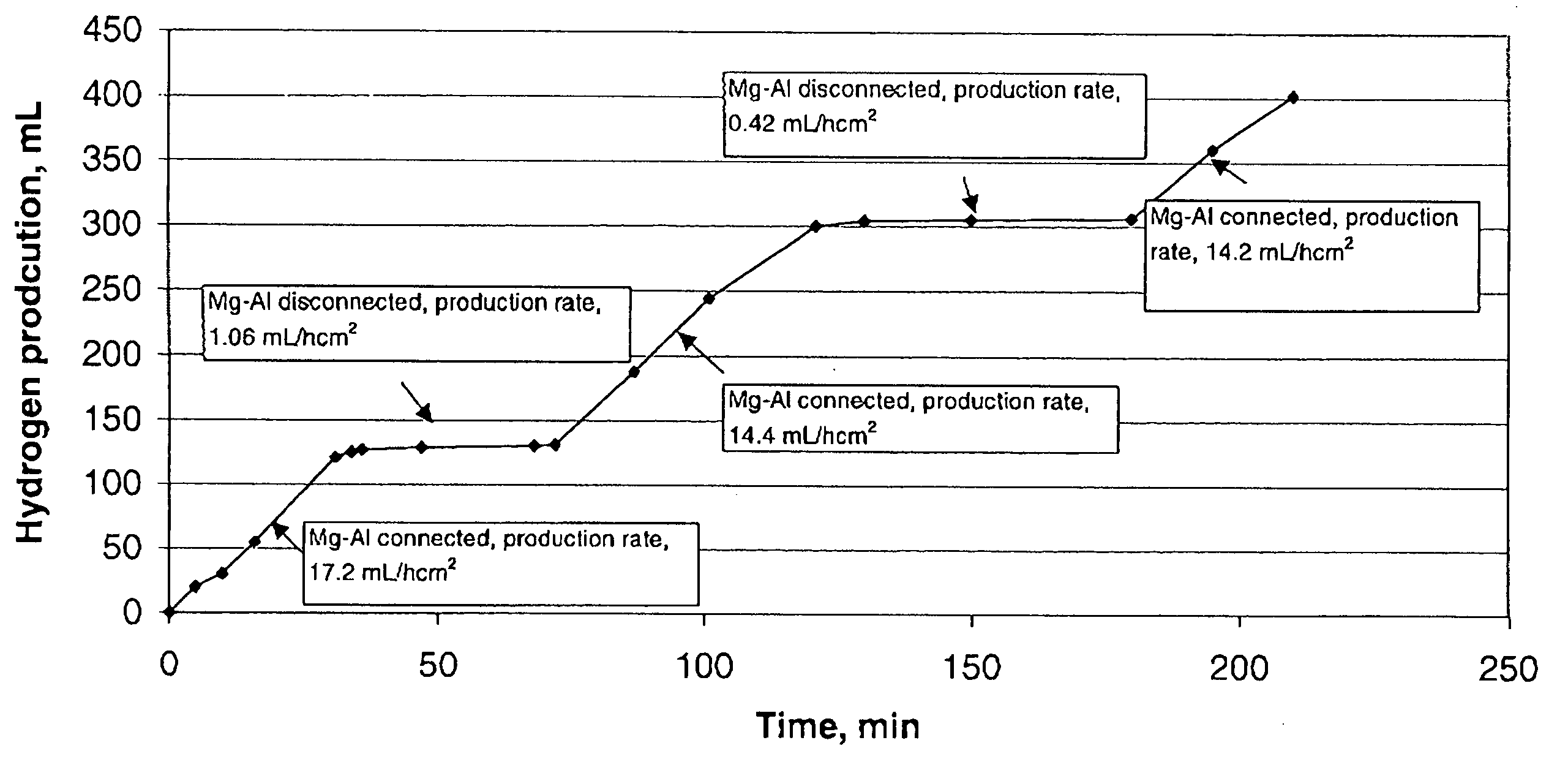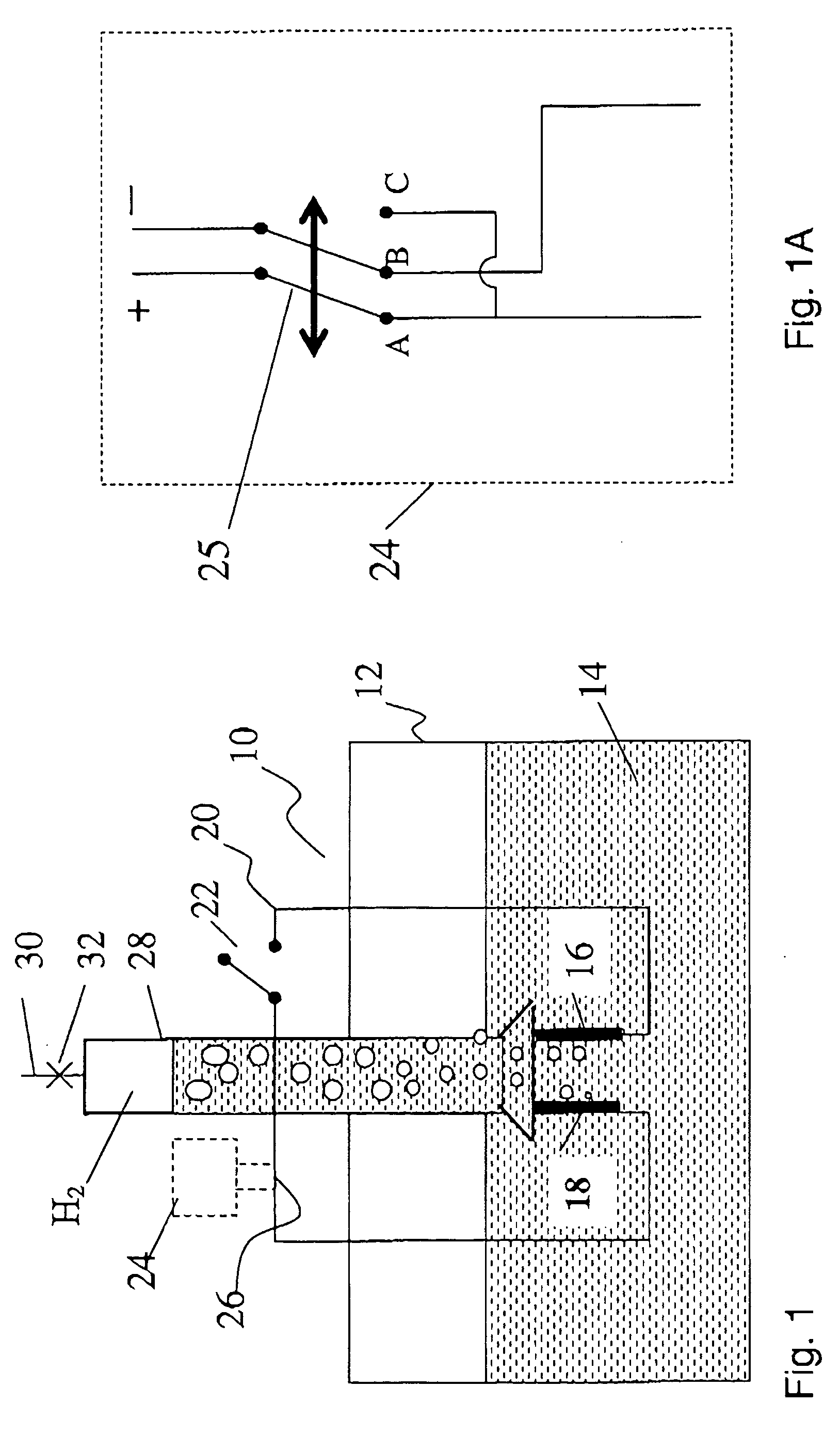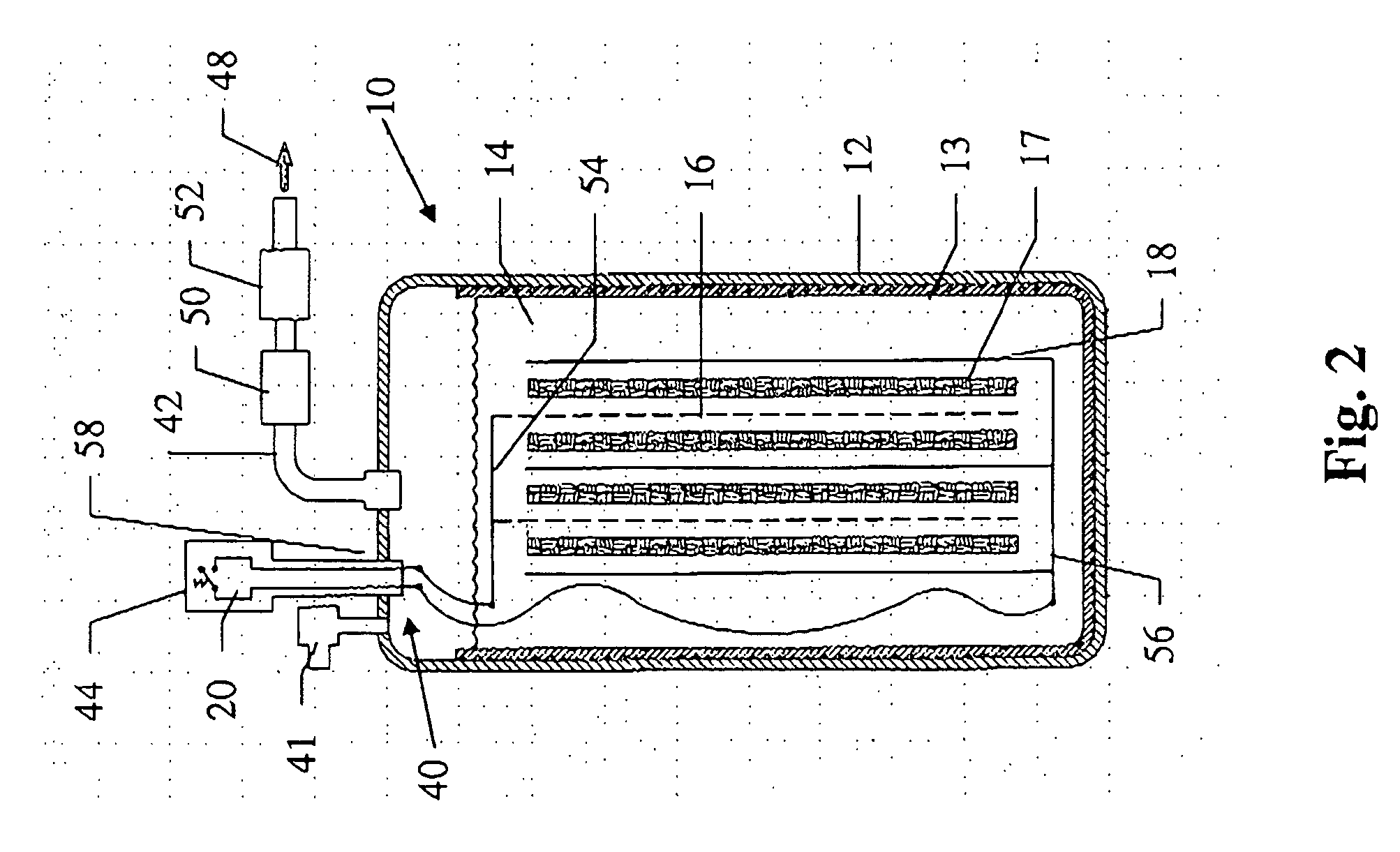Hydrogen generation system
a technology of hydrogen generation system and generating system, which is applied in the direction of electrochemical generators, cell components, manufacturing tools, etc., can solve the problems of not being very efficient, aluminum was used to generate hydrogen from water, and the power generation using nuclear power stations cannot be considered completely pollution-fr
- Summary
- Abstract
- Description
- Claims
- Application Information
AI Technical Summary
Problems solved by technology
Method used
Image
Examples
Embodiment Construction
[0054] Throughout this application the term cathode means the electrode at which reduction reaction takes place, the term anode means the electrode at which oxidation reaction takes place. In an electrolytic system current will be applied to the respective electrodes to define the anode and cathode. In a galvanic cell the electrode made from the more electronegative material will give up electrons and thus be the anode. In the preferred embodiment of the present invention employing a galvanic cell with magnesium (Mg) and aluminum (Al) electrodes the Mg is more electronegative and will give up electrons and thus act as anode and Al will act as cathode.
[0055] Turning to FIG. 1 the cell 10 as schematically illustrated includes a container 12 containing an aqueous electrolyte 14. Immersed in the electrolyte 14 are electrodes 16 and 18, electrode 16 is the cathode and electrode 18 is the anode (only one anode electrode and one cathode electrode are shown but obviously a number of differ...
PUM
| Property | Measurement | Unit |
|---|---|---|
| current | aaaaa | aaaaa |
| current | aaaaa | aaaaa |
| thick | aaaaa | aaaaa |
Abstract
Description
Claims
Application Information
 Login to View More
Login to View More - R&D
- Intellectual Property
- Life Sciences
- Materials
- Tech Scout
- Unparalleled Data Quality
- Higher Quality Content
- 60% Fewer Hallucinations
Browse by: Latest US Patents, China's latest patents, Technical Efficacy Thesaurus, Application Domain, Technology Topic, Popular Technical Reports.
© 2025 PatSnap. All rights reserved.Legal|Privacy policy|Modern Slavery Act Transparency Statement|Sitemap|About US| Contact US: help@patsnap.com



